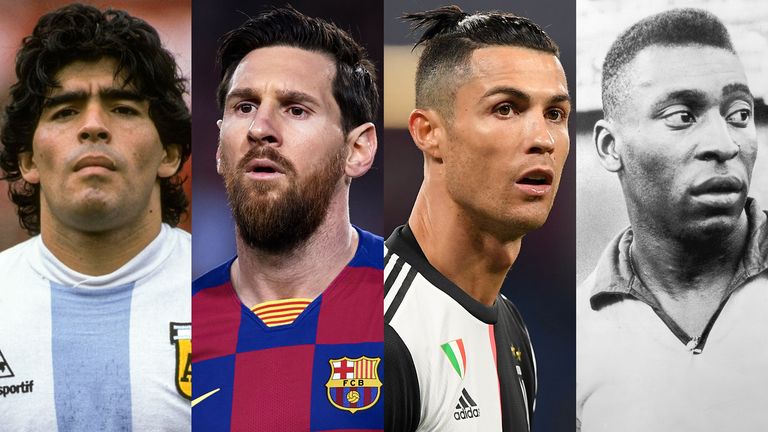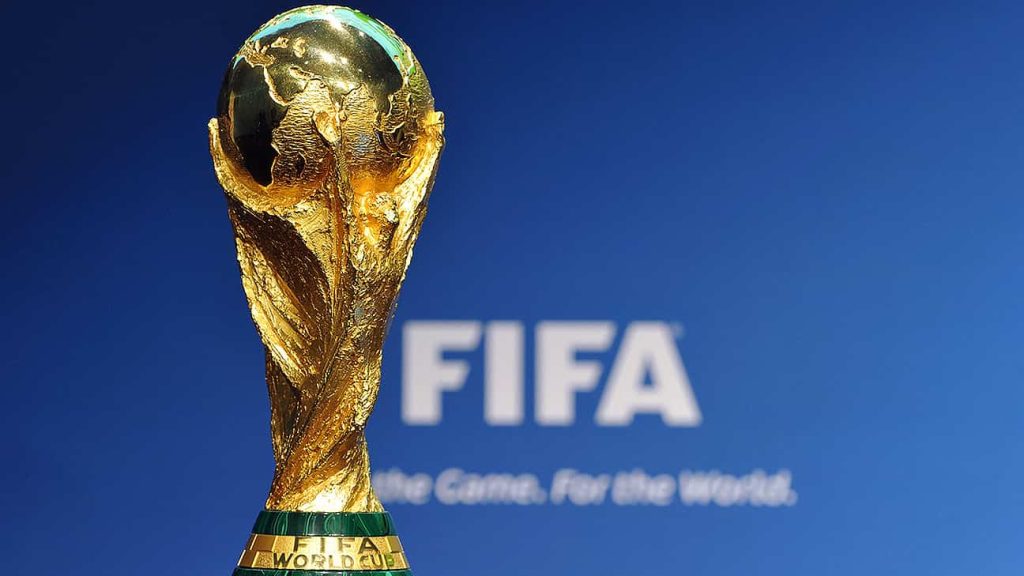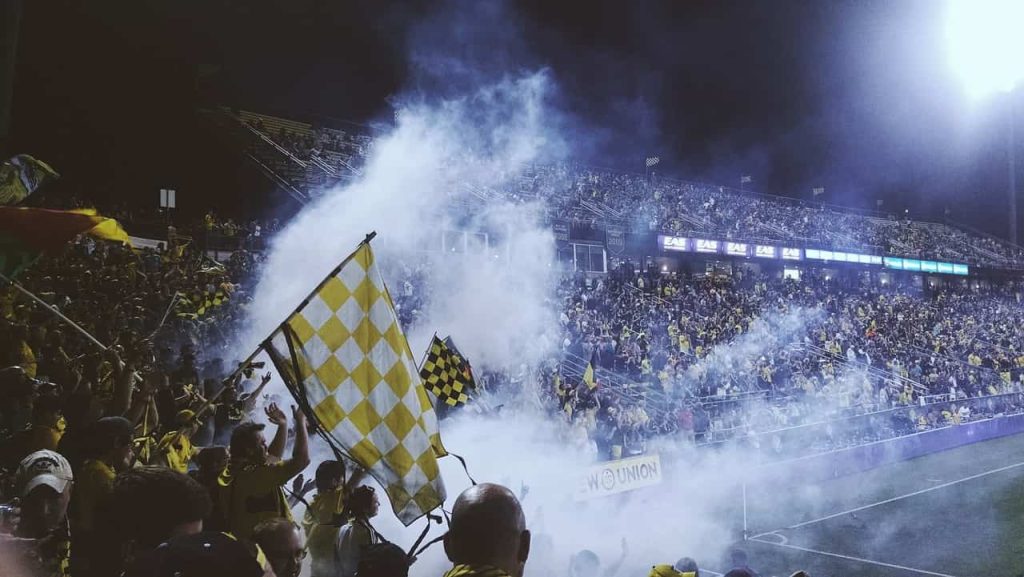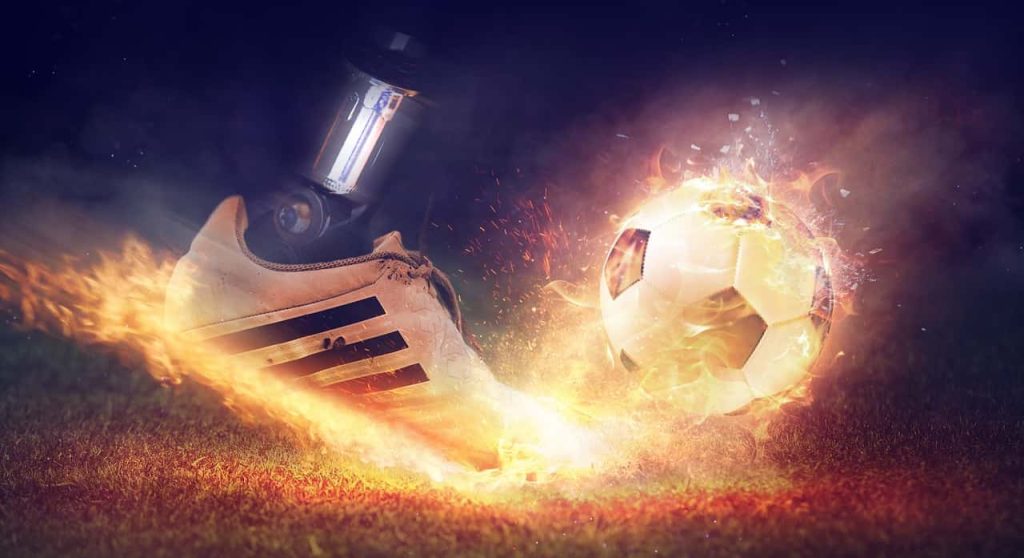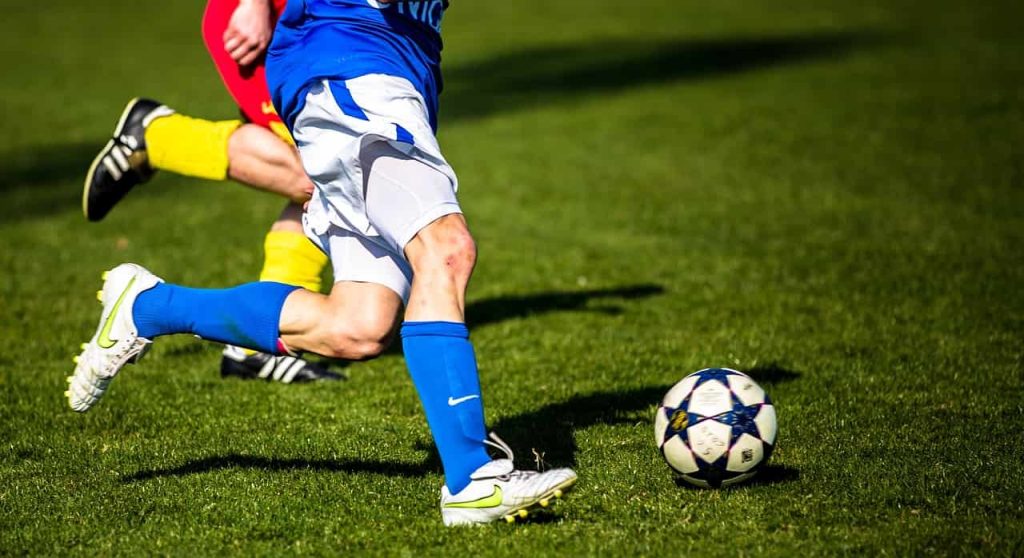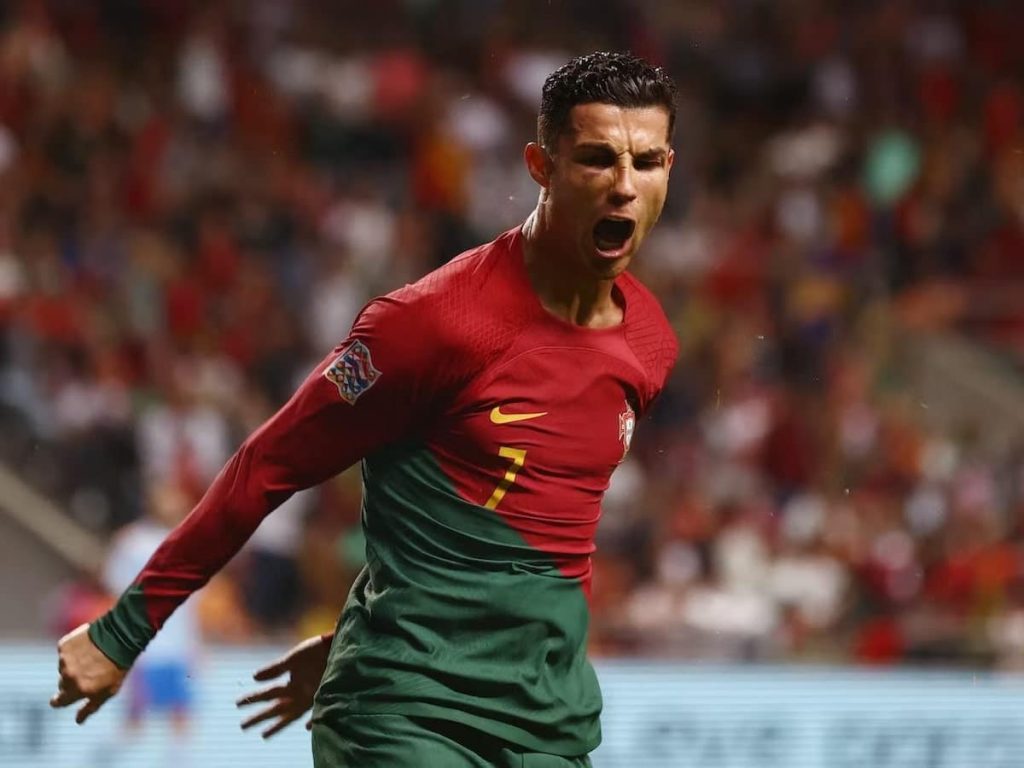The world’s biggest sporting event is coming to Qatar in 2022. The World Cup will be hosted here for the first time, as it has never been held anywhere in the Northern Hemisphere before.
The FIFA World Cup 2022 will occur between November and December, aligning with the traditional European football season.
Qatar will host a range of exciting new stadiums, training centers, and hotels to accommodate the influx of fans that are expected to attend. It is an exciting time for football and an excellent opportunity to explore the beautiful city of Doha and its surroundings. There’s so much to see and do when you visit, whatever your interests are. This blog will discuss the World Cup event as a whole.
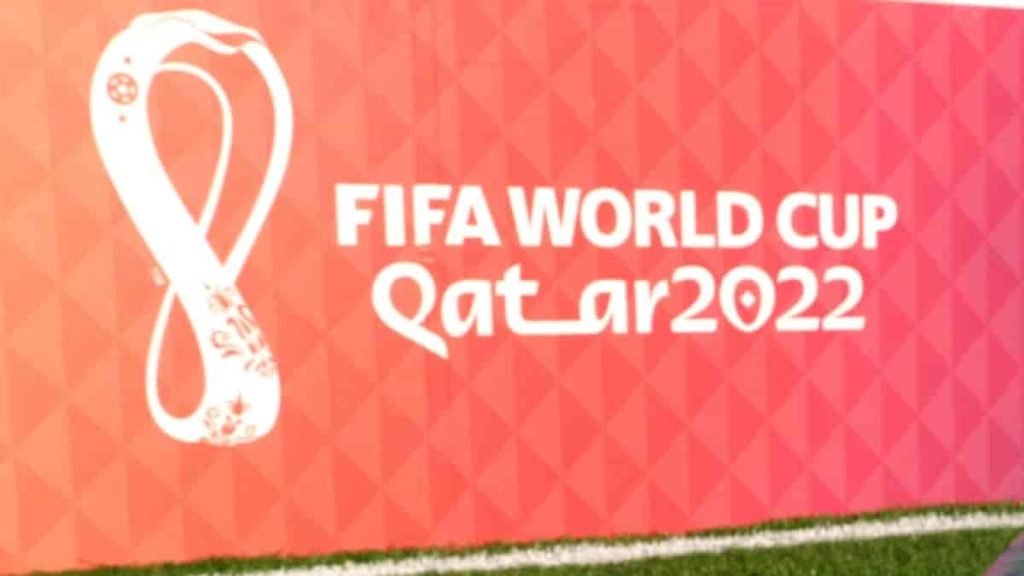
Credits: CBS Sports
What Symbols will be used in the FIFA World Cup
The FIFA world cup has several symbols, such as the following:
Mascot
The tournament’s official mascot was unveiled on April 1, 2022, during the group stage draw. Laeeb, an Arabic word that means “super-skilled player,” is the creature’s name. The official backstory of the character, published on the FIFA website, claims that it originates from a parallel world where tournament mascots live, “a world where ideas and creativity form the basis of characters that live in everyone’s minds.” According to the FIFA website, Laeeb “will be known for his youthful spirit, spreading joy and confidence everywhere he goes.”
Matchball
The “Al Rihla,” the official match ball, was unveiled on March 30, 2022. It was primarily influenced by Qatar’s culture, architecture, famous boats, and flag. Al Rihla is an Arabic word that means “the journey.” The ball is the first official match ball ever made with water-based glues and inks because it was created with sustainability in mind.
Adidas used some new features that allowed for speed and improved ball accuracy as “the game is getting faster” and “speeding up.”
Music
Instead of just one official song, a full FIFA World Cup official soundtrack has now been made available.
“Hayya Hayya (Better Together),” a song by Trinidad Cardona, Davido, and AISHA released on April 1, along with a music video, serves as the album’s opening track.
Gims and Ozuna’s “Arhbo,” the second song, was made available on August 19, 2022, along with a music video.
“Light The Sky,” performed by Nora Fatehi, Manal, Rahma Riad, and Balqees, is the third song. Released on October 7, 2022, along with the music video, and composed by RedOne.
Is Qatar Ready to Host the World Cup 2022?
As Qatar prepares to host the 2022 World Cup, which will begin on Sunday, 20th November, spectators and football teams have arrived.
During the tournament, more than 1.2 million spectators are anticipated in the Gulf nation.
The 32-team international competition will be held in Qatar, a nation of fewer than three million people, which won the right to host in 2010. Since then, numerous changes have been made in the country to get ready for the main event. So, is Qatar prepared to host the premier soccer event?
Stadiums
There will be eight stadiums used for the tournament. More than 26,000 people were employed directly to prepare the stadiums for the games in November and December by Qatar, the first Middle Eastern nation to host the competition.
For the event, seven new stadiums were constructed. Lusail Stadium, which hosted a match between the Saudi club Al Ahli and the Egyptian club Zamalek in September, was the last of the recently built venues to be officially opened.
The final will be on December 18, and games throughout each stage of the event will be held at the 2022 World Cup’s largest venue, Lusail Stadium, which can hold 80,000 spectators.
The 40,000-capacity Khalifa International Stadium, the eighth venue, has undergone renovations and improvements.
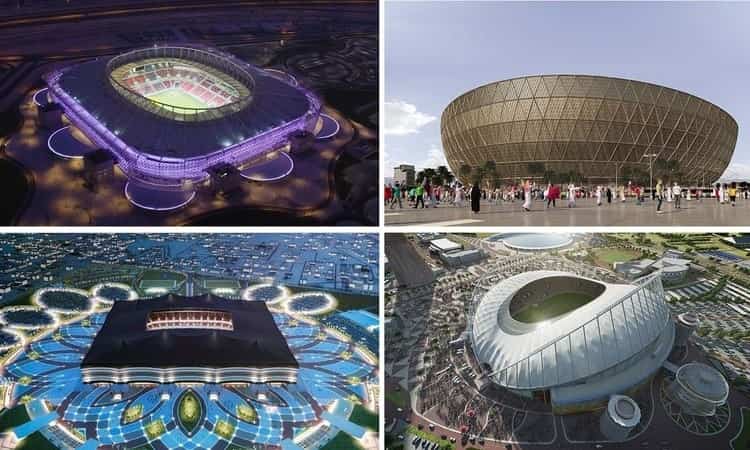
Credits: ArchDaily
Accommodations
There are worries that the nation may not have enough lodging for the anticipated influx of football fans during the tournament. Prepare for the massive event; the organizers have built hotels, apartments, villas, and infrastructure over the past 12 years.
To allay concerns about housing, the organizers have also allowed residents to list their homes and individual rooms for rent.
Additionally, there will be accommodations for fans on cruise ships and in the desert. At least three floating hotels with a combined bed capacity of about 10,000 have docked in Doha.
One thousand contemporary tents have been built on an artificial island north of Doha, according to the authorities, where some fans will be able to stay.
To ease worries about a potential housing shortage in Qatar, organizers are introducing more than 500 shuttle flights per day to allow spectators to stay in cities in neighboring nations like Dubai in the United Arab Emirates, Muscat in Oman, and Jeddah in Saudi Arabia.
Transport
Before the competition, Qatar made significant investments in expanding its transportation system.
In preparation for the games, the host nation built a tram system, major highways, and a metro rail system that launched in 2019.
Public transportation will be free for owners of a Hayya card, a fan ID that allows ticket holders entry into Qatar and the stadiums, between November 10 and December 23.
With all eight stadiums within a 55 km (34 mi) radius of Doha, the 2022 World Cup will be the most geographically condensed World Cup ever. If they so choose, fans can attend multiple games each day.
With the World Cup taking place in Doha, the capital city, it has raised additional traffic-related issues.
Five of the eight FIFA World Cup stadiums have direct access to the metro railway; the remaining four are connected via shuttle buses and the metro and the railway.
Passengers will be transported between transportation hubs and stadiums using a fleet of 4,000 buses, including 700 electric vehicles. Around 50,000 passengers per day are anticipated to use buses during the World Cup, according to organizers.
Security
Tens of thousands of security personnel are being deployed by Qatar for the World Cup. Many nations it has agreements in place for security cooperation.
Police from Turkey and Pakistan troops have been sent; both groups will work under Qatari command. Additionally, police delegations are being sent from several participating nations.
Last month, a five-day security exercise was conducted nationwide by the security forces of Qatar and their allies. The drills were intended to evaluate the emergency services’ readiness and responsiveness, according to The Peninsula daily.
The exercises, called Watan (which translates to the nation in Arabic), were carried out by 32,000 government security personnel and 17,000 members of the private security industry, according to the security committee for the tournament.
Prediction of Each Country Chances of Winning
The South Americans have emerged as the favorites to win the World Cup for a record-extending sixth time, according to Stats Perform’s artificial intelligence prediction model.
The World Cup prediction model estimates the probability of each match outcome, win, draw, or loss, using betting market odds and Stats Perform’s team rankings to produce a complete picture of who will win the 2022 World Cup.
Based on past and present team performance, odds and rankings are determined. The model then uses match outcome probabilities, taking into account the makeup of the groups and seedings into the knockout stages, to taconsiderpponent strength and the difficulty of their path to the final.
The country with the highest chance of winning the world cup in Brazil. According to the model, the five-time champions, who are the overall favorites to win, have a 16% chance of taking home the trophy and are also the team with the highest likelihood of making it to the championship game (25%).
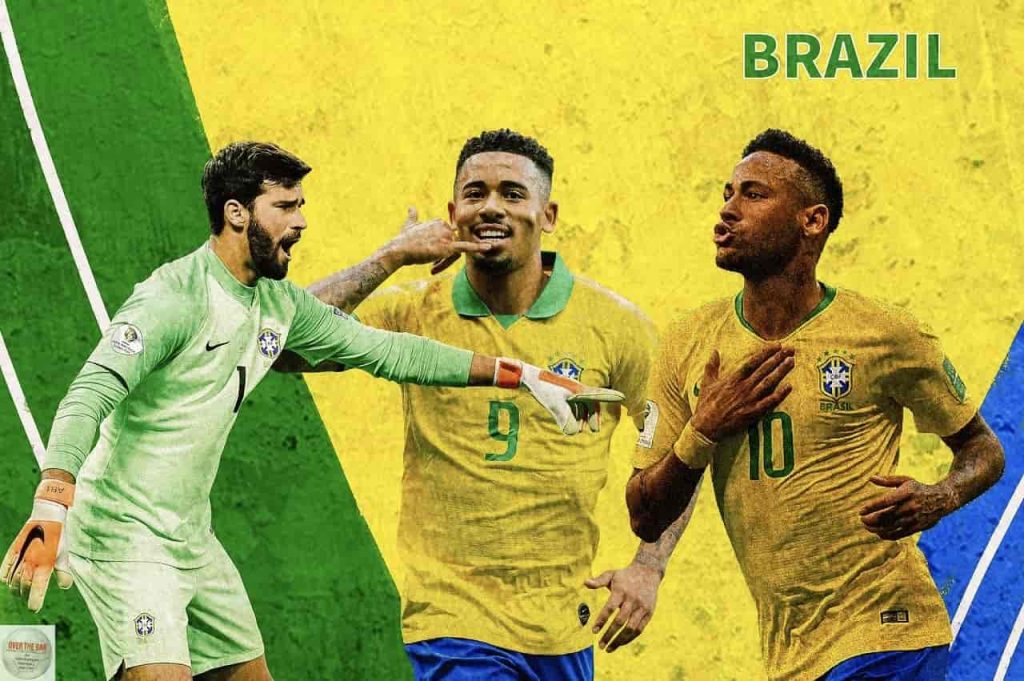
Credits: Over The Bar
The second-highest chance of winning this year’s World Cup, just behind five-time champions Brazil, is held by Argentina. The odds of Lionel Scaloni’s team winning the championship this year are 13%, making them the favorites in Group C.
Spain (9%) and England (9%), the final two teams in the top five for the 2022 World Cup, are France (12%) and Spain.
Despite being the third-strongest favorite to win the competition, France actually has a higher chance than Brazil (89%), by a wide margin, of making it to the tournament’s knockout rounds.
It seems unlikely that Croatia, who lost in the finals in 2018, will repeat their performance. Zlatko Dalic’s team has a 4% chance of returning to the championship game this year, with 11 other teams in the competition having a higher probability.
Stadium’s Official Addresses for the FIFA World Cup Qatar 2022 TM?
Below are listed each stadium’s official addresses for the FIFA World Cup Qatar 2022 TM:
– Stadium 974: Doha, Qatar; Building 161, Street 210; Zone 29
Al Bayt Stadium is located at building 125 on Street 393 in Zone 74 of Doha, Qatar.
– Lusail Stadium: Doha, Qatar, Building 660, Street 235, Zone 69
Al Thumama Stadium is located at building 521 on Street 260 in Zone 46 of Doha, Qatar.
– Education City Stadium: Doha, Qatar, Zone 52, Street 2741, Building 71
– Ahmad Bin Ali Stadium: Zone 51, Doha, Qatar, Building 306, Street 1700
Al Janoub Stadium is located in Doha, Qatar, at 1707 Building Street 281, Zone 91.
– Khalifa International Stadium: Doha, Qatar, Zone 54, Street 725, Building 51.
The FIFA Fan Festival
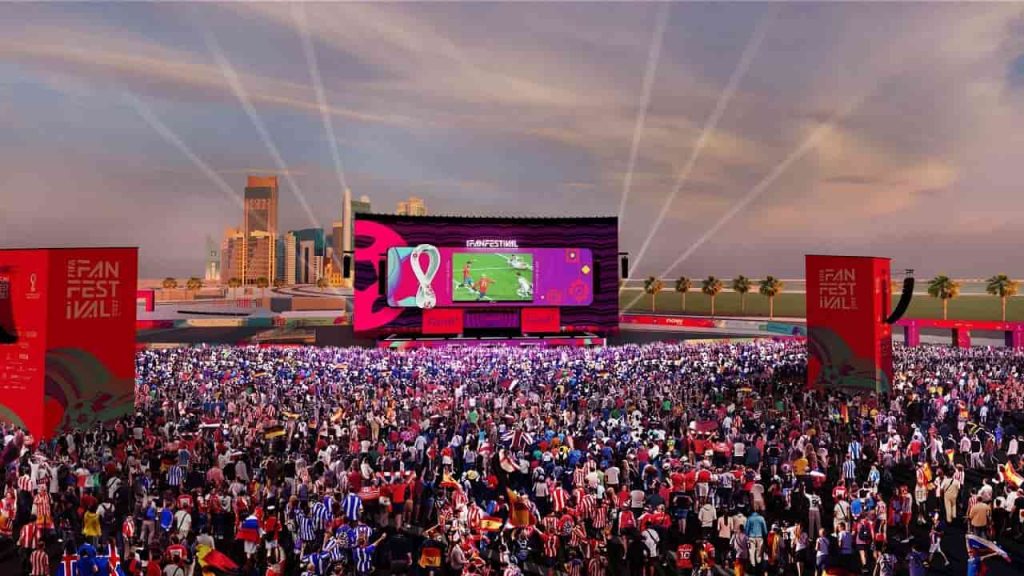
Credits: FIFA
The biggest football celebration in the world is the FIFA Fan Festival. On match days, it is the ideal location to watch FIFA World CupTM matches live while also taking in an exciting variety of music and entertainment.
Every Host City and the host nation’s experience of the FIFA World Cup includes the FIFA Fan Festival. The FIFA Fan Festival has something to offer everyone, regardless of your level of enthusiasm for the sport, your level of interest, or your preference for music and events.
What attendees of the FIFA Fan Festival can anticipate:
- Enjoy the FIFA World Cup in a well-known setting.
- Enjoy a lively music and entertainment program while watching World Cup matches that are broadcast live.
- Celebrate with local and international supporters.
- Enjoy the culture of the host nation and host city on a local level.
- Enjoy cutting-edge sponsor activations and unique products.
- In a distinctive setting, sample culinary highlights.
- Visit the official store, where you can purchase only licensed goods.
The FIFA Fan Festival will run concurrently with the FIFA World Cup Qatar 2022 and be accessible starting on Day 20. 2022 November through December 18.
Between the Westbay neighborhood and the Souq Waqif, in Al Bidda Park, is where the event will take place.
The Festival will be open every day of the competition, which is from November 20 to December 18, 2022. Every matchday, the venue will be open for business from two hours before the first match begins until one hour after the final match of the day.
The FIFA Fan Festival, like all officially sanctioned FIFA World Cup Qatar 2022 events, will abide by all pandemic-related regulations set forth by the regional government. Visit this page frequently to stay up to date on new information.
Guide to All 32 Teams’ Football Kits at the 2022 World Cup
The 32 teams participating in the 2022 Fifa World Cup have released their uniforms ahead of the tournament’s start on Sunday in Qatar.
The World Cup, though it isn’t a catwalk, is undoubtedly the largest platform a fashion designer could ever hope to have their creations displayed on.
This year’s strips feature recycled polyester or ocean plastic-made jerseys, as well as a kit intended to express disapproval of the tournament’s circumstances.
The 32 kits that will be on display in Qatar are listed below, alphabetically, in the following order:
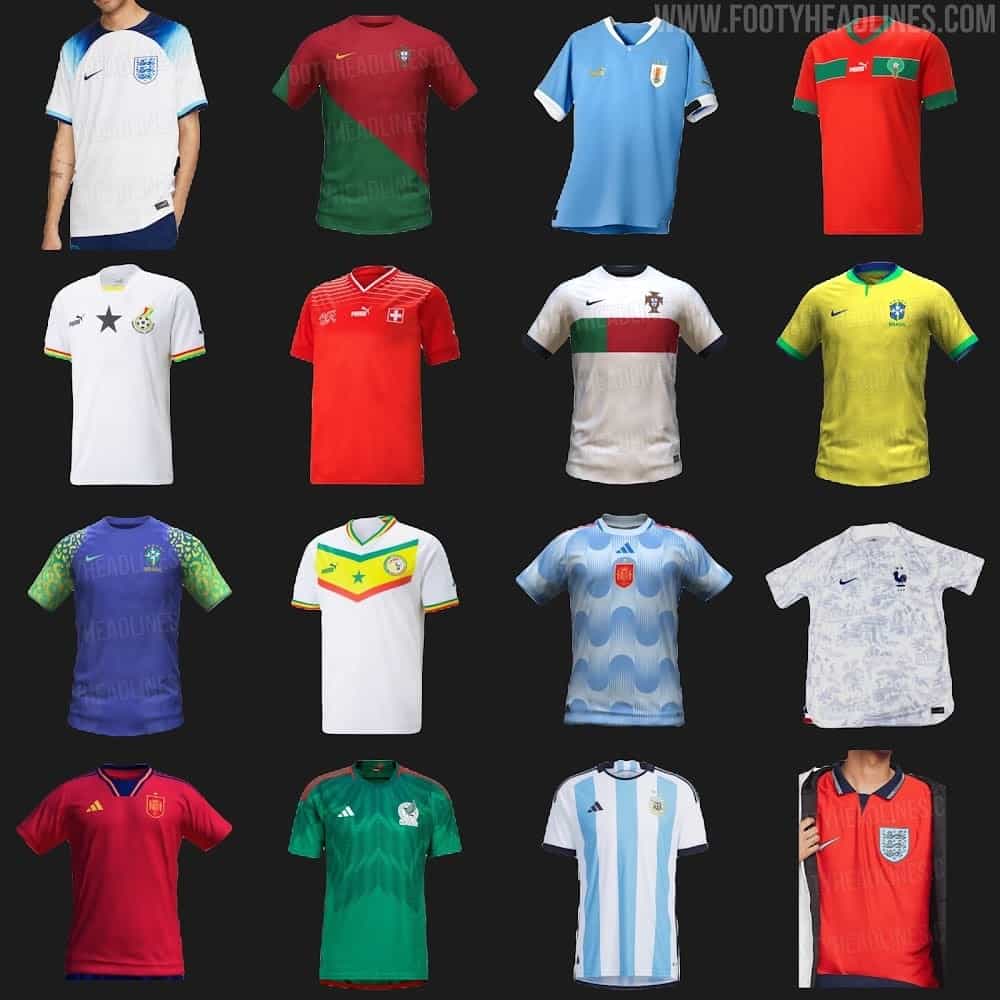
Credits: Footy Headlines
Argentina by Adidas
Adidas’ design for Argentina’s home jerseys incorporates both the Argentine Football Association crest and the country’s coat of arms within the team’s customary pale blue and white stripes.
The slim-fitting jersey is composed of 50% Parley for the Oceans ocean plastic.
Australia by Nike
Nike created Australia’s cheery home uniform for the competition, which features gold, yellow, and green tones that allude to the country’s wetlands and forests as well as the country’s arid outback.
The Commonwealth Coat of Arms shield, one of the symbols of the Oceanic country, is framed on the breast by an emu and a kangaroo.
Belgium by Adidas
Adidas’ Belgium shirt, a novel departure from the team’s traditional black, yellow, and red argyle print shirt, features red and gold flames on the raglan sleeves.
The fiery pattern alludes to the Belgian team’s moniker, the Red Devils.
Brazil By Nike
Printed all over is a jaguar pattern, or onça-pintada in Portuguese, on this vividly colored shirt made by Nike specifically for Brazil. The print, according to Nike, depicts Brazil’s infamously flamboyant “style of play,” which has won the World Cup five times.
Yellow dominates the body, but is contrasted by green edges and blue piping around the neck and sleeves. The team’s standard shirt color is yellow, but this shade is a little bit brighter.
Cameroon by One all Sports
This shirt was created by the athletic apparel company One All Sports to resemble a torn-down Cameroonian flag.
While bands of black, yellow, and red line the sleeves, thick green stripes fan out diagonally from the center.
Canada by Nike
The only Nike team without a new look is Canada, which has worn the same uniform throughout the past calendar year.
The kits have the maple leaf, which is the country’s most recognizable symbol, on the chest and are composed of the nation’s traditional vivid red and white color scheme. The shirts, like all Nike uniforms, are seamless and use the company’s dri-fit ADV drying technology.
Costa Rica by New Balance
Players from Costa Rica, also known as Los Ticos, will wear red jerseys with blue trimmings made of 100% recycled polyester and equipped with New Balance’s dry technology, which is intended to keep athletes cool in Qatar’s hot climate.
Kendall Wason, a defender for Costa Rica, said, “Stepping out onto the pitch for my country is an incredibly proud moment, and I can’t wait for the first game in these new kits.” “These are the ideal jerseys for us to demonstrate our capabilities to the world.”
Croatia by Nike
Croatia’s World Cup uniform features the nation’s distinctive red and white squares, just like previous home jerseys. The design, according to the brand, takes a “modern” t-shirt design approach.
The blurry squares on the away kit are a tribute to “the ebbs and flows of Croatia’s Adriatic coastline,” it said, in contrast to the red and white home shirt’s distinct checked pattern.
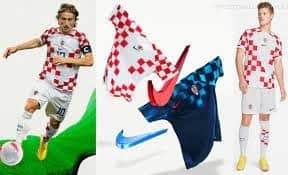
Credits: Football Fashion
Denmark by Hummel
The primary color of Denmark’s home jersey is red, and it is intentionally simple. The only other details on the top are a few stripes on the cuff, the Hummel logo, and the Danish badge.
Hummel, a sportswear company, wanted to make the uniforms less noticeable in protest of the event being held in Qatar.
Even though the brand loves football and the sense of community it fosters, it decided to tone down all the details, including its own Hummel logo and chevrons, because it didn’t want to draw attention to itself during a competition that has claimed thousands of lives.
Ecuador by Marathon
The yellow shirt for Ecuador from the Ecuadorian sports brand Marathon was created to honor the nation’s flag. There is a faint silhouette of Ecuador on the back.
The word “Ecuador” is written on the inner hem in six different languages.
England by Nike
The home uniform for England is different from Nike’s 2018 World Cup design and more like the team’s Euro 1996 uniform. Large blue gradients can be seen on the shoulders of the slim shirt, which is noticeably red-color-free.
The English team’s signature statement collar is featured on the retro-style red away kit and conceals the recognizable three lions logo underneath.
France by Nike
Nike’s World Cup champions’ uniform In order to create its vision of “the New France,” France draws from both its past and its future.
The away shirt is lightly embellished with images of the cockerel, the Arc de Triomphe, and Clairefontaine, while the home shirt is lightly adorned with graphics of oak leaves and olive branches, which stand for strength, solidarity, and peace.
Germany by Adidas
Adidas embellished the plain home jersey with a circular gold team badge in the middle, drawing design cues from Germany’s first-ever national football jersey.
The German flag’s red, black, and yellow colors are present along the neck and sides of the updated version, which also has thick vertical stripes.
Ghana by Puma
Ghana will play in an eye-catching uniform created by Puma to showcase Ghanaian pride. The national flag is reinterpreted and traditional Ghanaian textile patterns are incorporated into a graphic in the top middle.
Across the chest are also the Black Star of Ghana and the word “Ghana” in a distinctive black typeface.
Iran by Majid
The collar and cuffs of the Majid Iran 2022 World Cup jersey feature a simple white design with trim that matches the Iranian flag’s colors.
The hem is solid red, and the raglan sleeves are printed with gray blotches all over.
Japan by Adidas
The blue and white home uniform of Japan is influenced by origami and is made by Adidas.
The designers claimed that the three-legged crow pattern, which is printed all over, represents self-expression. According to legend, the amorphous shapes represent speed and mimic the fast-paced nature of Japanese theater.
Mexico by Adidas
Adidas decided to use swirling lines in a deep maroon color that contrast the beige shirt’s base as a nod to the country’s ancient civilisations and Mixtec art for the Mexico home kit.
The mythical Quetzalcoatl, an Aztec god who assumes the form of a feathered serpent, is one of the symbols tucked away among the swirls.
Morocco by Puma
Morocco’s uniform incorporates the colors of the nation’s flag, with red and green lines completing the arms and neckline, similar to many of the shirts being worn in Qatar.
The team’s logo is placed in the center of the white shirt, which is embellished with graphics that are reminiscent of traditional Moroccan mosaics.
Netherlands by Nike
The Netherlands’ traditional uniform has been given a flashy makeover with this shiny orange shirt, which is meant to resemble a lion’s mane, the nation’s traditional emblem.
Black accents stand out against the vivid orange, such as the black shield behind the Dutch Republic Lion and the black Nike tick.
Poland by Nike
The design of Poland’s mostly plain red home kit was inspired by the elements of the nation’s coat of arms, and the sleeve graphics depicted an eagle’s nest and feathers.
Poland’s national colors, which honor peace, are used to create the kit.
Portugal by Nike
The two-toned Portugal uniform has blocks of peppery red and forest green with splashes of gold that allude to the team’s previous victories. The Federation of Portuguese Football (Federaço Portuguesa de Futebol) crest, displayed on the left, symbolizes national pride.
The off-white base of the away kit is intended to stand out among the sea of white opponents.
Qatar by Nike
The home shirt for the host nation, Qatar, features a straightforward pattern with white triangular patterns on the sleeves and a plain maroon base that echoes the color of the Qatari flag.
The team’s away kit, which features printed pearls overlaid on a white background, is a little more daring because they are the only country making their tournament debut this year. The Qatari uniform is designed to resemble a sandstorm in the sun as players sprint across the field.
Saudi Arabia by Nike
Saudi Arabia’s away kit is green with a distinctive mosaic graphic print that Nike claimed evokes “speed and boldness,” taking inspiration from the uniforms worn in 2018 and 2020.
The color scheme for the home uniform is the opposite of the away uniform, with a white base and green trimmings, as well as a green Saudi Arabian Football Federation shield and falcon.
Senegal by Puma
Senegal, the reigning champions of the African Cup of Nations, will sport a green uniform designed by Puma that alludes to the team’s moniker, the lions.
Alongside a picture of a lion, which stands for bravery and intensity, the national flag, the federation emblem, and the words Les Lions are displayed.
Serbia by Puma
The 2022 Serbia Away white jersey has a subdued cross print along with gold accents and the team’s traditional blue and white colors.
The new crest, which features the Serbian coat of arms and a two-headed eagle, was created by Puma and is displayed on the kit.
South Korea by Nike
Most of Spain’s minimalist home uniform is deep red, with black and yellow material used for the V-neck and the shirt bindings. Along the shoulders are the distinctive triple stripes of Adidas.
The country’s 1982 logo, when Spain last played host to the world’s largest football tournament, is referenced at the top of the team’s away uniform.
Spain by Adidas
Most of Spain’s minimalist home uniform is deep red, with black and yellow material used for the V-neck and the shirt bindings. Along the shoulders are the distinctive triple stripes of Adidas.
The country’s 1982 logo, when Spain last played host to the world’s largest football tournament, is referenced at the top of the team’s away uniform.
Switzerland by Puma
The home uniform of the Swiss national team for the 2022 World Cup features a gradient ombre color scheme with a white top that progressively turns gray at the waist.
The sleeves have unusual mesh cuffs, and the cross on the thick red band across the chest directly evokes the nation’s flag with white borders.
Tunisia by Kappa
The white jerseys with red lining worn by Tunisian players make reference to the country’s history and heritage. The background’s design was inspired by the Carthaginian Empire’s ancient Tunisian soldiers’ armor.
Kappa created the kits to be “resistant, elastic, and breathable.”
Uruguay by Puma
The national flag and the federation’s logo are placed in the center of Uruguay’s white World Cup 2022 away uniform’s light-blue vertical stripes.
The word “Uruguay” is written in cursive script along the top’s front, adding to what Puma calls “a fresh and fearless take on the national team identity.”
Us by Nike
American sportswear company Nike looked to other well-liked national sports like basketball and hockey for inspiration for the US team uniforms.
The white home shirt has double swooshes on the sleeves that resemble those on American football jerseys and a hockey jersey-inspired pattern on the front. Each sleeve has red and white bands all around it. The more colorful design on the away kit is meant to celebrate diversity and youth.
Wales by Adidas
The simple design of the Adidas Wales 2022 World Cup home jersey features a red base color and three white stripes on the shoulders.
The round collar’s green and white trim extends up the side and into the armpits. On the left side of the chest, there is a place for the Wales Football Association badge.
What is the Oldest Squad at the World Cup?
When it comes to the pressure-filled environment of the later stages of a World Cup, the experience can be an unmatched asset. If a shocking group stage exit is anticipated and you need someone to pull the team out of the woods, it may become even more crucial. No manager wants to enter a significant tournament without at least a few stars who have proven themselves in similar situations.
We will use the median age because there are a variety of measurements we could use to determine which squad is the oldest. The average age of the teams from Belgium and Iran is 29. We’ll choose one because the former’s squad has more players with at least 50 caps than any other squad at the Qatar World Cup, with six of them reaching triple digits.
After making so many promises over the past ten years, much has been made of the possibility that this could be Belgium’s golden generation‘s final opportunity to win a major tournament.
Who is the Oldest Player in the Belgium Squad?
Although there are two 35-year-old players on the Belgium team, Jan Vertonghen is the oldest passenger. He is a few weeks older than Dries Mertens, the forward.
Vertonghen appears to have been around for a long time, which is probably the case. He began his career in 2006 at Ajax, where he made 155 appearances. Before a stint at Benfica, he played for Tottenham Hotspur for eight years and made over 230 appearances. He’s currently in his native country with Anderlecht.
Since his debut in 2007, he has appeared 141 times for Belgium’s national team, including the 2014 and 2018 World Cups.
Who is the Oldest Player in the World Cup Squad?
A recent World Cup broke the record for the oldest player to play the world cup. Essam El Hadary, 45 years and 161 days old, represented Egypt in goal at the 2018 tournament in Russia.
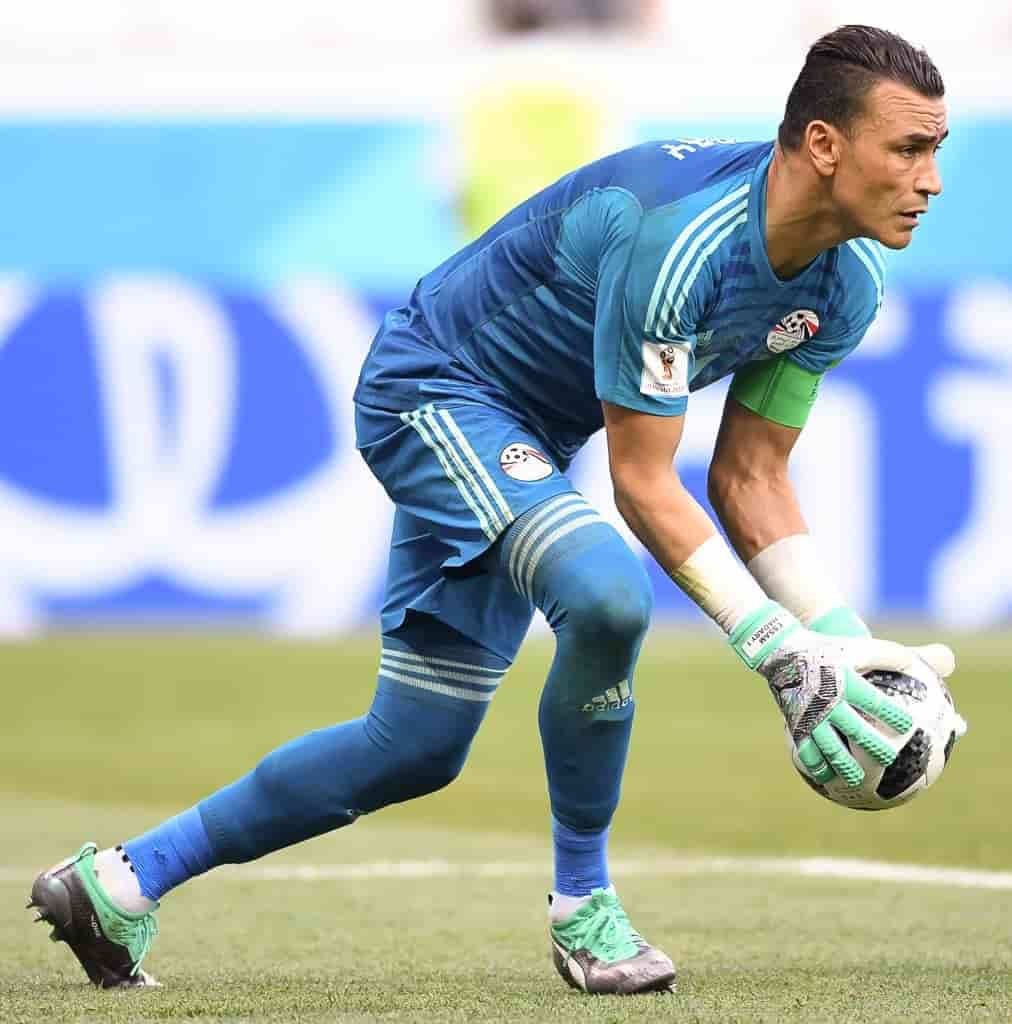
Credits: Wikipedia
However, Cameroonian legend Roger Milla, who played at the 1994 World Cup at 42 years and 39 days, is still third on the list. Goalkeepers frequently break age records.
In 2022, Alfredo Talavera will likely be the oldest player in the 2022 world cup if he participates in any of Mexico’s fixtures.
2022 World Cup Prize Money: How Does it Work and How Much Do the Winners get?
The World Cup is, without a doubt, the most prestigious award in football; every child grows up dreaming of winning it for their nation.
Any player’s ambition would be ignited by the honor of hoisting that gleaming golden trophy, but since we’re talking about football, there is undoubtedly a financial incentive as well.
But how much money goes into the World Cup?
How is World Cup Prize Money Decided?
The World Cup prize money, which FIFA has set aside, is distributed by how each team competes; the further a nation advances, the more money its football association will be awarded.
However, FIFA is reportedly awarding a total prize pool of just under £600 million this year, so federations can anticipate taking home a sizable portion of the action no matter what happens.
How Much Do the World Cup Winners Earn?
Of course, the champions get the healthiest of those slices above.
In Qatar this winter, FIFA will award the winning nation’s federation a whopping £35 million, up from France’s winnings of around £30 million for their successful campaign four years ago.
World Cup Prize Money by Round
The World Cup runners-up reportedly receive a prize payment of £25m, while the winners take home a tasty £35m.
With earnings of £23 million and £21 million, respectively, the third- and fourth-placed teams are well taken care of, while quarterfinalists take home £14 million.
A nation will receive £11 million for advancing past the group stage, while a federation will receive £7.5 million for failing to move past the opening round.
How Much Do Players Earn at the World Cup
Players who represent their countries do not earn a set salary, as is the case at the club level, but rather a match fee for each cap they make.
The amount varies from federation to federation, but the English team, for instance, reportedly received £2,500 for each World Cup match they started, while those who sat out received £1,500.
However, the international game also includes bonuses. According to reports, Australian players will receive £164,000 if they advance to the knockout round, and the FA planned to divide a premium of £5 million equally among the team if they won the 2018 World Cup in Russia.
What is the Pay difference Between the Men and Women’s World Cup?
Football prize money for men’s and women’s competitions is drastically different. The global stage is the clearest example of this topic, which is the subject of intense debate.
Compared to FIFA’s prize budget of £590 million for this winter’s tournament, the USWNT, champions of the women’s 2019 World Cup, received about £3.5 million of a prize pot worth about £25 million. This is less than half of what group-stage dumpees in Qatar will recover.
Sadio Mane Ruled Out of World Cup Through Injury
Due to his injury, Sadio Mane will not compete in the 2022 World Cup, according to Senegal.
Senegal admitted they would likely be without Sadio Mane for the first few games of the World Cup. However, the Bayern Munich forward was still selected for the team despite initial expectations that he would miss the competition.
Senegal has officially eliminated Mane from the competition after admitting defeat in their efforts to get Mane back in shape.
Sadio will not be participating in the World Cup, the team doctor Manuel Afonso said. “Unfortunately, today’s MRI scan shows us that the evolution of the injury is not as positive as we had hoped,” he added.
Before this, Senegal had previously acknowledged that they would do whatever it took to get Mane back in time, with high-ranking officials even admitting they intended to use a witch doctor to speed up the Bayern forward’s recovery. However, their efforts had been ineffective.
Following his team’s 6-1 victory over Werder Bremen on November 8, Mane was found to have what Bayern described as an injury to the head of his right fibula. Still, the German team had initially believed that Mane’s problem was no more than a knock.
Mane’s injury, which is not thought to be particularly serious and does not require surgery, was soon revealed in reports, but the timing of the issue ultimately cost Mane his chance to play at his second World Cup.
How Many People Are Expected to Watch the World Cup?
Football’s biggest stage, the World Cup, typically attracts more television viewers than any other sporting event.
People who do not regularly watch football frequently enjoy it as the only football-related event. Even though this World Cup in Qatar is unique from all others in several ways, substantial TV audiences are expected.
Since the weather won’t permit widespread outdoor screenings, there may be a higher-than-normal number of people watching at home in many nations, increasing viewing figures.
The first World Cup to be held in the Middle East will be in Qatar in 2022, and so far, it has proven to be the most contentious.
The build-up to the World Cup has not been typical, with issues ranging from the alleged corruption involved in the tournament’s awarding to the countries’ views on LGBTQI+ people and the reported deaths of migrant workers while preparing for the game.
However, according to projections, the number of viewers for this World Cup won’t be impacted. Gianni Infantino, the president of FIFA, stated earlier this week that 5 billion people are anticipated to watch the World Cup this winter.
The global TV audience for the 2018 tournament in Russia was 3.5 billion. The rise is probably attributable to football’s growing appeal in populous nations like Canada and the USA.
All-time World Cup Viewing Records
One billion people watched the Argentina vs. Germany World Cup final in Brazil in 2014, which was broadcast worldwide. As a result, it was the most-watched sporting event in history.
Regarding overall viewership, the Olympics typically outperform the World Cup, but a World Cup final is unmatched in the sporting world.
The fact that 3.572 billion people watched the 2018 World Cup, which was held in Russia, demonstrates how quickly the world’s interest in football is expanding even today. That represents more than 50% of the world’s population who are four years old or older.
1.12 billion people worldwide watched the championship game between France and Croatia. Although it is currently thed World Cup, Qatar is expected to surpass it. In all likelihood, the 2026 World Cup will surpass that.
According to reports, the tournament can be seen in at least 42 nations, from Canada to Liberia. The BBC and ITV, free to air, are the two options for World Cup fans in England. Wales residents can watch the games for free on S4C.
How Could VAR Have Affected Previous World Cups?
One of the most divisive topics in modern football is using the video assistant referee (VAR). Some people love it, some people hate it, and many people fall somewhere in the middle.
In actuality, VAR would have changed how many goals or events were handled. There are arguments for and against the very concept of VAR, as well as how it should be used.
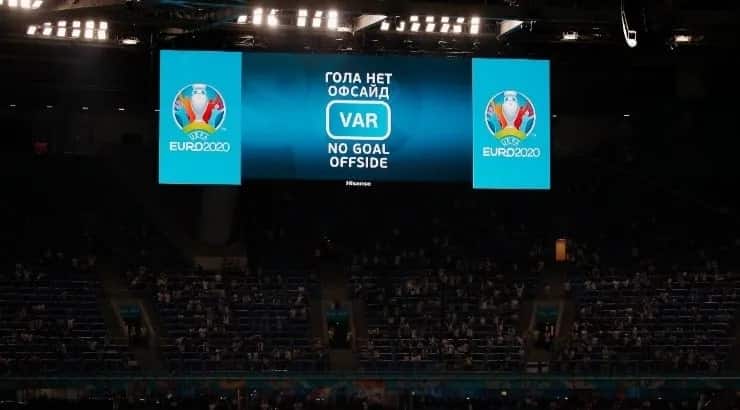
Credits: Bolavip
Frank Lampard’s ‘goal’ – 2010
To get it out of the way, we had to start here. In the 2010 World Cup Round of 16, England faced Germany after narrowly advancing from a group that included Slovenia, the USA, and Algeria.
England got a shaky start and quickly fell behind the Germans 2-0.
After Matthew Upson scored with a header, Frank Lampard followed up with a half-volley from the edge of the box that smacked the underside of the bar, bounced over the goal line, and was eventually clawed out by Manuel Neuer.
Replays revealed that the ball was clearly over the line as play continued with England visibly stunned. The Three Lions were defeated 4-1 by a strong German team and never recovered. If goal-line technology and VAR had been used, England would have tied the game at 2-2, and the course of the game might have changed.
South Korea vs. Italy – 2002
Italy and South Korea’s Round of 16 matches, which they hosted jointly in 2002, were rife with controversy, and the Italians have not forgotten it.
The Azzurri were up 1-0 thanks to Christian Vieri, but referee Byron Moreno was about to steal the show. Gianluigi Buffon was able to save the penalty, but he should not have given South Korea a sentence for a continuous string of fouls.
The legendary Francesco Totti was then charged with a crime involving the same incident Vieri was not. Later, Alessandro Del Piero received a deliberate elbow to the face in the box. Instead of a penalty and a red card with VAR, Moreno received neither.
Totti was given a second yellow card for a dive in the box after Paolo Maldini was kicked in the head, which didn’t call for a halt to play. A second look would have been warranted in this case. Finally, Damiano Tommasi’s golden goal was disallowed for an offside that appeared to be extremely close and might have been reversed with VAR.
By the way, the Ecuadorian FA later 2002 suspended Moreno for match-fixing. He was caught in 2010 sneaking six kilograms of cocaine through JFK airport while wearing only his underwear. Take what you will from that.
Hand of God- 1986
This is one of the most notorious World Cup moments ever, and it will be for many, many years to come. This action by the late, great Diego Maradona needs little explanation.
Maradona scored the opening goal for Argentina in the quarterfinal match against Mexico 86′ when he got his hand on the end of a cross and guided the ball over Peter Shilton. Poor Peter never quite recovered from it. According to Maradona, “a little with the head of Maradona and a little with the hand of God” was used to score the goal.
He (possibly) evened things out by scoring in the same game following an incredible solo run that only he could, advancing Argentina to the semifinal. It hardly needs to be said that if VAR had been utilized, they might have seen a handball during the build-up.
Argentina vs. Germany-1990
The Italia ’90 final turned out to be much less of a spectacle than the typical fan might anticipate from the World Cup’s conclusion. West Germany and Argentina barely entertained the crowd in the Stadio Olimpico when they faced off against one another in Rome.
Rudi Voller was brought down in the box with five minutes remaining, even though it appeared to be a dive. Two players were dismissed as a result of the Argentines’ protests.
West Germany won the competition thanks to a penalty kick by Andreas Brehme, who stepped up to take it. Diego Maradona was limited to sobbing at full strength.
England vs. West Germany
It only seems fair to end with the 1966 championship game at the original Wembley if we start with Frank Lampard’s ghost goal.
When Geoff Hurst unleashed a vicious shot in overtime that, like Lampard’s, smashed the goal line and the underside of the bar, the score was still 2-2. The England players wheeled away in celebration after it was ruled a goal, and Hurst later added another to seal the outcome.
Replays revealed that it had not crossed the line, and had the necessary technology been available, England might not have received the lone gold star on its shirt.
World Cup Squads
Group A
Qatar
Goalkeepers: Saad Al Sheep (Al-Sadd), Yousuf Hassan (Al-Gharafa), and Meshaal Barsham.
Defenders: Pedro Miguel (Al-Sadd), Tarek Salman (Al-Sadd), Musaab Khidir (Al-Sadd), Bassam Al Rawi (Al-Duhail), Boualem Khoukhi (Al-Sadd), Jassim Gabir (Al-Arabi)Abdelkarim Hassan (Al-Sadd), and Homam Al Amin (Al-Gharafa).
Midfielders: Ali Asad (Al-Sadd), Assim Madibo (Al-Duhail), Al Hajri (Al-Sadd), Mohammed Waad (Al-Sadd), Salem, Karim Boudiaf (Al-Duhail), Abdulaziz Hatim (Al-Rayyan), Ismaeel Mohammad (Al-Duhail), and Mustafa Meshaal (Al-Sadd),
Forwards: Naif Al Hadhrami (Al-Rayyan), Ahmed Alaa (Al-Gharafa), Almoez Ali (Al-Duhail), Hassan Al Haydos (Al-Sadd), Khalid Muneer (Al-Wakrah), Mohammed Muntari (Al-Duhail), and Akram Afif (Al-Sadd),
Ecuador
Goalkeepers: Alexander Dominguez (Liga de Quito), Hernan Galindez (Aucas), and Moises Ramirez (Independiente del Valle).
Defenders: Angelo Preciado (Gent), Piero Hincapie (Bayer Leverkusen), Xavier Arreaga (Seattle Sounders), Jackson Porozo (Troyes), Robert Arboleda (São Paulo), Felix Torres (Santos Laguna), Pervis Estupinan (Brighton & Hove Albion), William Pacho (Royal Antwerp FC), and Diego Palacios (Los Angeles FC),
Midfielders: Moises Caicedo (Brighton), Jose Cifuentes (Los Angeles FC), Alan Franco (Talleres), Jeremy Sarmiento (Brighton), Jhegson Mendez (Los Angeles FC), Carlos Gruezo (Augsburg), Angel Mena (Leon), Ayrton Preciado (Santos Laguna), Romario Ibarra (Pachuca), and Gonzalo Plata (Valladolid),
Strikers: Enner Valencia (Fenerbahce), Michael Estrada (Cruz Azul), Kevin Rodriguez (Imbabura SC), and Djorkaeff Reasco (Newell’s Old Boys).
Senegal
Goalkeepers: Alfred Gomis (Stade Rennes), Seny Dieng (Queens Park Rangers), and Eduoard Mendy (Chelsea).
Defenders: Fode Ballo Toure (AC Milan), Ismail Jakobs (Monaco), Kalidou Koulibaly (Chelsea), Abdou Diallo (RB Leipzig), Formose Mendy (Amiens), Youssouf Sabaly (Real Betis), and Pape Abou Cisse (Olympiakos),
Midfielders: Krepin Diatta (Monaco), Idrissa Gana Gueye (Everton),), Cheikhou Kouyate (Nottingham Forest), Pathe Ismael Ciss (Rayo Vallecano), Mamadou Loum (Reading), Nampalys Mendy (Leicester City), Moustapha Name (Pafos FC), Pape Gueye (Olympique Marseille), and Pape Matar Sarr (Tottenham Hotspur).
Forwards: Famara Diedhiou (Alanyaspor), Bamba Dieng (Olympique Marseille), Ismaila Sarr (Watford), Nicolas Jackson (Villarreal), Ilimane Ndiaye (Sheffield United), and Boulaye Dia (Salernitana).
Netherlands
Goalkeepers: Justin Bijlow (Feyenoord), Andries Noppert (Heerenveen), Remko Pasveer (Ajax Amsterdam).
Defenders: Daley Blind (Ajax), Virgil van Dijk (Liverpool), Denzel Dumfries (Internazionale), Stefan de Vrij (Internazionale), Jeremie Frimpong (Bayer Leverkusen), Nathan Ake (Manchester City), Tyrell Malacia (Manchester United), Jurrien Timber (Ajax), and Matthijs de Ligt (Bayern Munchen).
Midfielders: Xavi Simons (PSV Eindhoven), Teun Koopmeiners (Atalanta Bergamo), Steven Berghuis (Ajax), Frenkie de Jong (Barcelona), Davy Klaassen (Ajax), and Kenneth Taylor (Ajax), and Marten de Roon (Atalanta Bergamo),
Forwards: Steven Bergwijn (Ajax), Memphis Depay (Barcelona), Luuk de Jong (PSV), Noah Lang (Club Brugge), Wout Weghorst (Besiktas), Vincent Janssen (Antwerp), and Cody Gakpo (PSV).
Group B
England
Goalkeepers: Aaron Ramsdale (Arsenal), Nick Pope (Newcastle), and Jordan Pickford (Everton).
Defenders: Eric Dier (Tottenham), Trent Alexander-Arnold (Liverpool), Kyle Walker (Man City), John Stones (Man City), Benjamin White (Arsenal), Harry Maguire (Man Utd), Conor Coady (Everton, on loan from Wolves), Luke Shaw (Man Utd), and Kieran Trippier (Newcastle).
Midfielders: Jude Bellingham (Borussia Dortmund), Jordan Henderson (Liverpool), Declan Rice (West Ham), Conor Gallagher (Chelsea), Mason Mount (Chelsea), and Kalvin Phillips (Man City).
Forwards: Raheem Sterling (Chelsea), Harry Kane (Tottenham), Callum Wilson (Newcastle), Bukayo Saka (Arsenal), Marcus Rashford (Man Utd), Phil Foden (Man City), Jack Grealish (Man City), and James Maddison (Leicester City).
Iran
Goalkeepers: Alireza Beiranvand (Persepolis), Payam Niazmand (Sepahan), Amir Abedzadeh (Ponferradina), and Hossein Hosseini (Esteghlal).
Defenders: Abolfazl Jalali (Esteghlal), Sadegh Moharrami (Dinamo Zagreb), Hossein Kananizadegan (Al Ahli SC), Morteza Pouraliganji (Persepolis), Majid Hosseini (Kayserispor), Milad Mohammadi (AEK), Shoja Khalilzadeh (Al Ahli SC), Ehsan Hajisafi (AEK), and Ramin Rezaeian (Sepahan)
Midfielders: Saeid Ezatolahi (Vejle Boldklub), Ali Karimi (Kayserispor), Ahmad Nourollahi (Shabab Al Ahli), Rouzbeh Mehdi Torabi (Persepolis), Vahid Amiri (Persepolis), Alireza Jahanbakhsh (Feyenoord), Ali Gholizadeh (Charleroi), Saman Ghoddos (Brentford), Cheshmi (Esteghlal),
Forwards: Karim Ansarifard (Omonia), Sardar Azmoun (Bayer Leverkusen), and Mehdi Taremi (Porto).
United States
Goalkeepers: Ethan Horvath (Luton), Matt Turner (Arsenal), and Sean Johnson (New York City FC)
Defenders: Cameron Carter-Vickers (Celtic), Aaron Long (New York Red Bulls), Shaq Moore (Nashville), Tim Ream (Fulham), Antonee Robinson (Fulham), DeAndre Yedlin (Inter Miami), Sergio Dest (AC Milan), Joe Scally (Borussia Monchengladbach), and Walker Zimmerman (Nashville).
Midfielders: Brenden Aaronson (Leeds), Kellyn Acosta (LAFC), Luca de la Torre (Celta Vigo), Weston McKennie (Juventus), Yunus Musah (Valencia), Tyler Adams (Leeds), and Cristian Roldan (Seattle Sounders).
Forwards: Jesus Ferreira (FC Dallas), Jordan Morris (Seattle Sounders), Christian Pulisic (Chelsea), Josh Sargent (Norwich), Gio Reyna (Borussia Dortmund), Tim Weah (Lille), and Haji Wright (Antalayaspor).
Wales
Goalkeepers: Danny Ward (Leicester), and Wayne Hennessey (Nottingham Forest), Adam Davies (Sheffield United).
Defenders: Ben Davies (Tottenham), Ben Cabango (Swansea), Joe Rodon (Rennes, on loan from Tottenham), Chris Mepham (Bournemouth), Ethan Ampadu (Spezia, on loan from Chelsea), Tom Lockyer (Luton), Neco Williams (Nottingham Forest), Connor Roberts (Burnley), and Chris Gunter (AFC Wimbledon).
Midfielders: Joe Allen (Swansea), Dylan Levitt (Dundee United), Harry Wilson (Fulham), Joe Morrell (Portsmouth), Matthew Smith (MK Dons), Jonny Williams (Swindon), Aaron Ramsey (Nice), Rubin Colwill (Cardiff), and Sorba Thomas (Huddersfield).
Forwards: Mark Harris (Cardiff), Gareth Bale (Los Angeles FC), Kieffer Moore (Bournemouth), Dan James (Fulham, on loan from Leeds), and Brennan Johnson (Nottingham Forest).
Group C
Argentina
Goalkeepers: Emiliano Martinez (Aston Villa), Franco Armani (River Plate), and Geronimo Rulli (Villarreal).
Defenders: Marcos Acuna (Sevilla), Juan Foyth (Villarreal), Cristian Romero (Tottenham), Nahuel Molina (Atletico Madrid), Gonzalo Montiel (Sevilla), Nicolas Otamendi (Benfica), Lisandro Martinez (Manchester United), German Pezzella (Real Betis), and Nicolas Tagliafico (Lyon).
Midfielders: Rodrigo De Paul (Atletico Madrid), Alejandro Gomez (Sevilla), Guido Rodriquez (Real Betis), Alexis Mac Allister (Brighton), Exequiel Palacios (Bayer Leverkusen), Enzo Fernandez (Benfica), and Leandro Paredes (Juventus),
Forwards: Lautaro Martinez (Inter Milan), Joaquin Correa (Inter Milan), Paulo Dybala (Roma), Angel Di Maria (Juventus), Lionel Messi (Paris Saint-Germain), Julian Alvarez (Manchester City), and Angel Correa (Atletico Madrid).
Saudi Arabia
Goalkeepers: Nawaf Al-Aqidi (Al-Nassr), and Mohamed Al-Owais (Al-Hilal), Mohamed Al-Yami (Al-Ahly).
Defenders: Yasser Al-Shahrani (Al-Hilal), Ali Al-Bulaihi (Al-Hilal), Abdulelah Al-Amri (Al-Nassr), Hassan Tambakti (Al-Shabab), Sultan Al-Ghanam (Al-Nassr), Abdullah Madu (Al-Nassr), Saud Abdulhamid (Al-Hilal), and Mohammed Al-Break (Al-Hilal),
Midfielders: Salman Al-Faraj (Al-Hilal), Riyadh Sharahili (Abha), Hattan Bahebri (Al-Shabab), Ali Al-Hassan (Al-Nassr), Abdulelah Al-Malki (Al-Hilal), Sami Al-Najei (Al-Nassr), Abdullah Otayf (Al-Hilal), Nasser Al-Dawsari (Al-Hilal), Abdulrahman Al-Aboud (Ittihad), Mohamed Kanno (Al-Hilal), and Salem Al-Dawsari (Al-Hilal),
Forwards: Nawaf Al-Abed (Al-Shabab), Haitham Asiri (Al-Ahly), Firas Al-Buraikan (Al-Fateh), and Saleh Al-Shehri (Al-Hilal)
Mexico
Goalkeepers: Guillermo Ochoa (America), Rodolfo Cota (Leon), and Alfredo Talavera (Juarez).
Defenders: Jorge Sanchez (Ajax), Kevin Alvarez (Pachuca), Johan Vasquez (Cremonese), Hector Moreno (Monterrey), Cesar Montes (Monterrey), Nestor Araujo (America), Gerardo Arteaga (Genk), and Jesus Gallardo (Monterrey).
Midfielders: Andres Guardado (Real Betis), Hector Herrera (Houston Dynamo), Charly Rodriguez (Cruz Azul), Luis Chavez (Pachuca), Edson Alvarez (Ajax), Orbelin Pineda (AEK Athens), Erick Gutierrez (PSV), and Luis Romo (Monterrey).
Forwards: Alexis Vega (Guadalajara), Hirving Lozano (Napoli), Roberto Alvarado (Guadalajara), Uriel Antuna (Cruz Azul), Henry Martin (America), Raul Jimenez (Wolves), and Rogelio Funes Mori (Monterrey).
Poland
Goalkeepers: Lukasz Skorupski (Bologna), Kamil Grabara (FC Copenhagen), and Wojciech Szczesny (Juventus).
Defenders: Jan Bednarek (Aston Villa), Bartosz Bereszynski (Sampdoria), Matty Cash (Aston Villa), Nicola Zalewski (Roma), Robert Gummy (FC Augsburg), Artur Jedrzejczyk (Legia Warsaw), Jakub Kiwior (Spezia), Kamil Glik (Benevento), and Mateusz Wieteska (Clermont)
Midfielders: Krystian Bielik (Birmingham), Przemyslaw Frankowski (Lens), Jakub Kaminski (VfL Wolfsburg), Grzegorz Krychowiak (Al-Shabab), Michal Skoras (Lech Poznan), Kamil Grosicki (Pogon Szczecin), Damian Szymanski (AEK Athens), Szymon Zurkowski (Fiorentina), Sebastian Szymanski (Feyenoord), and Piotr Zielinski (Napoli).
Forwards: Robert Lewandowski (Barcelona), Krzysztof Piatek (Salernitana), Arkadiusz Milik (Juventus), and Karol Swiderski (Charlotte FC).
Group D
France
Goalkeepers: Hugo Lloris (Tottenham), Alphonse Areola (West Ham), and Steve Mandanda (Rennes).
Defenders: Lucas Hernandez (Bayern Munich), Ibrahima Konate (Liverpool), Jules Kunde (Barcelona), Benjamin Pavard (Bayern Munich), Theo Hernandez (AC Milan), William Saliba (Arsenal), Raphael Varane (Manchester United), Dayot Upamencano (Bayern Munich), and Axel Disasi (Monaco).
Midfielders: Eduardo Camavinga (Real Madrid), Matteo Guendouzi (Marseille), Adrien Rabiot (Juventus), Aurelien Tchouameni (Real Madrid), Youssouf Fofana (Monaco), and Jordan Veretout (Marseille).
Forwards: Karim Benzema (Real Madrid), Ousmane Dembele (Barcelona), Kingsley Coman (Bayern Munich), Antoine Griezmann (Atletico Madrid), Kylian Mbappe (Paris Saint-Germain), Randal Kolo Muani (Eintracht Frankfurt), Olivier Giroud (AC Milan), and Marcus Thuram (Borussia Monchengladbach).
Australia
Goalkeepers: Mathew Ryan (FC Copenhagen), Danny Vukovic (Central Coast Mariners), and Andrew Redmayne (Sydney FC).
Defenders: Aziz Behich (Dundee United), Milos Degenek (Columbus Crew), Goodwin (Adelaide United), Thomas Deng (Aibirex Niigata), Nathaniel Atkinson (Hearts), Fran Karacic (Brescia), Harry Souttar (Stoke City), Joel King (Odense Boldklub), and Kye Rowles (Hearts).
Midfielders: Aaron Mooy (Celtic), Jackson Irvine (St Pauli), Bailey Wright (Sunderland), Cameron Devlin (Hearts), Ajdin Hrustic (Hellas Verona), Riley McGree (Middlesbrough), and Keanu Baccus (St Mirren).
Forwards: Awer Mabil (Cadiz), Mathew Leckie (Melbourne City), Garang Kuol (Central Coast Mariners), Martin Boyle (Hibernian), Jason Cummings (Central Coast Mariners), Mitchell Duke (Fagiano Okayama), and James Maclaren (Melbourne City)
Goalkeepers: Oliver Christensen (Hertha Berlin), Kasper Schmeichel (Nice), and Frederik Ronnow (Union Berlin).
Defenders: Simon Kjaer (AC Milan), Joachim Andersen (Crystal Palace), Joakim Maehle (Atalanta), Rasmus Kristensen (Leeds United), Alexander Bah (Benfica), Jens Stryger Larsen (Trabzonspor), Victor Nelsson (Galatasaray), Andreas Christensen (Barcelona), Daniel Wass (Brondby),
Midfielders: Thomas Delaney (Sevilla), Mathias Jensen (Brentford), Christian Eriksen (Manchester United), Pierre-Emile Hojbjerg (Tottenham), Robert Skov (Hoffenheim), and Christian Norgaard (Brentford).
Forwards: Anthony Contreras (Herediano), Joel Campbell (Leon), Johan Venegas (Alajuelense).
Germany
Goalkeepers: Marc-Andre ter Stegen (Barcelona), Manuel Neuer (Bayern Munich), and Kevin Trapp (Eintracht Frankfurt)
Defenders: Matthias Ginter (Freiburg), Lukas Klostermann, Niklas Suele (Borussia Dortmund), Nico Schlotterbeck (Borussia Dortmund), Christian Guenter (Freiburg), Antonio Ruediger (Real Madrid), Thilo Kehrer (West Ham United), David Raum (RB Leipzig), and Armel Bella Kotchap (Southampton)
Midfielders: Ilkay Gundogan (Manchester City), Jamal Musiala, Jonas Hofmann (Borussia Monchengladbach), Leon Goretzka, Serge Gnabry, Mario Goetze (Eintracht Frankfurt), Leroy Sane, Joshua Kimmich, Thomas Mueller (all Bayern Munich), and Julian Brandt (Borussia Dortmund).
Strikers: Kai Havertz (Chelsea), Youssoufa Moukoko (Borussia Dortmund), Karim Adeyemi Borussia Dortmund), and Niklas Fuellkrug (Werder Bremen).
Japan
Goalkeepers: Daniel Schmidt (Sint Truiden), Eiji Kawashima (Strasbourg), and Shuichi Gonda (Shimizu S-Pulse)
Defenders: Hiroki Sakai (Urawa Red Diamonds), Ko Itakura (Borussia Monchengladbach), Takehiro Tomiyasu (Arsenal), Maya Yoshida (Schalke 04), Miki Yamane (Kawasaki Frontale), Shogo Taniguchi (Kawasaki Frontale), Yuto Nagatomo (FC Tokyo), and Hiroki Ito (VfB Stuttgart).
Midfielders: Junya Ito (Stade de Reims), Wataru Endo (VfB Stuttgart), Hidemasa Morita (Sporting), Ao Tanaka (Fortuna Dusseldorf), Ritsu Doan (SC Freiburg), Daichi Kamada (Eintracht Frankfurt), Takumi Minamino (AS Monaco), Kaoru Mitoma (Brighton & Hove Albion), Takefusa Kubo (Real Sociedad), Gaku Shibasaki (Leganes), and Yuki Soma (Nagoya Grampus).
Forwards: Takuma Asano (Vfl Bochum), , Ayase Ueda (Cercle Brugge), Daizen Maeda (Celtic), and Shuto Machino (Shonan Bellmare)
Group F
Belgium
Goalkeepers: Thibaut Courtois (Real Madrid), Koen Casteels (VfL Wolfsburg), and Simon Mignolet (Club Brugge).
Defenders: Jan Vertonghen (Anderlecht), Arthur Theate (Rennes), Toby Alderweireld (Royal Antwerp), Wout Faes (Leicester), Zeno Debast (Anderlecht), Timothy Castagne (Leicester), and Thomas Meunier (Borussia Dortmund).
Midfielders: Kevin De Bruyne (Man City), Youri Tielemans (Leicester), Axel Witsel (Atletico Madrid), Hans Vanaken (Club Brugge), Leander Dendoncker (Aston Villa), Yannick Carrasco (Atletico Madrid), Amadou Onana (Everton), Thorgan Hazard (Borussia Dortmund).
Forwards: Eden Hazard (Real Madrid), Charles De Ketelaere (AC Milan), Leandro Trossard (Brighton), Jeremy Doku (Rennes), Romelu Lukaku (Inter Milan), Dries Mertens (Galatasaray), Michy Batshuayi (Fenerbahce), Lois Openda (Lens).
Canada
Goalkeepers: Dayne St Clair (Minnesota United), Milan Borjan (Red Star Belgrade), and James Pantemis (CF Montreal).
Defenders: Alistair Johnston (CF Montreal), Steven Vitoria (Chaves), Richie Laryea (Nottingham Forest/Toronto FC on loan), Kamal Miller (CF Montreal), Joel Waterman (CF Montreal), Derek Cornelius (Panetolikos), and Sam Adekugbe (Hatayspor).
Midfielders: Atiba Hutchinson (Besiktas), Jonathan Osorio (Toronto FC), David Wotherspoon (St. Johnstone FC), Stephen Eustaquio (FC Porto), Samuel Piette (CF Montreal), Mark-Anthony Kaye (Toronto FC), Liam Fraser (Deinze), and Ismael Kone (CF Montreal).
Forwards: Alphonso Davies (Bayern Munich), Cyle Larin (Club Brugge), Ike Ugbo (Troyes), Lucas Cavallini (Vancouver Whitecaps), Jonathan David (Lille), Taejonn Buchanan (Club Brugge), Junior Hoilett (Reading), and Liam Millar (Basel).
Morocco
Goalkeepers: Yassine Bounou (Sevilla), Ahmed Reda Tagnaouti (Wydad Casablanca), and Munir El Kajoui (Al Wehda).
Defenders: Nayef Aguerd (West Ham United), Noussair Mazraoui (Bayern Munich), Yahia Attiat Allah (Wydad Casablanca), Achraf Dari (Stade Brest), Jawad El Yamiq (Real Valladolid), Badr Benoun (Qatar SC), Achraf Hakimi (Paris Saint-Germain), and Romain Saiss (Besiktas).
Midfielders: Sofyan Amrabat (Fiorentina), Selim Amallah (Standard Liege), Yahya Jabrane (Wydad Casablanca), Azzedine Ounahi (Angers), Bilal El Khannouss (Racing Genk), and Abdelhamid Sabiri (Sampdoria).
Forwards: Zakaria Aboukhlal (Toulouse), Soufiane Boufal (Angers), Ilias Chair (Queens Park Rangers), Youssef En-Nesyri (Sevilla), Abde Ezzalzouli (Osasuna), Abderrazak Hamdallah (Al Ittihad), Walid Cheddira (Bari), Anass Zaroury (Burnley), and Hakim Ziyech (Chelsea).
Croatia
Goalkeepers: Dominik Livakovic (Dinamo Zagreb), Ivo Grbic (Atletico Madrid), and vica Ivusic (Osijek).
Defenders: Domagoj Vida (AEK Athens), Dejan Lovren (Zenit Saint Petersburg), Josip Juranovic (Celtic), Borna Sosa (Stuttgart), Josip Stanisic (Bayern Munch) , Borna Barisic (Rangers), Martin Erlic (Sassuolo), Josko Gvardiol (RB Leipzig), and Josip Sutalo (Dinamo Zagreb).
Midfielders: Mateo Kovacic (Chelsea), Marcelo Brozovic (Inter Milan), Nikola Vlasic (Torino), Lovro Majer (Rennes), Mario Pasalaic (Atalanta), Kristijan Jakic (Eintracht Frankfurt), Luka Sucic (Red Bull Salzburg), and Luka Modric (Real Madrid).
Forwards: Ivan Perisic (Tottenham), Andrej Kramaric (1899 Hoffenheim), Mislav Orsic (Dinamo Zagreb), Bruno Petkovic (Dinamo Zagreb), Ante Budimir (Osasuna), and Marko Livaja (Hajduk Split)
Group G
Brazil
Goalkeepers: Ederson (Man City), Alisson (Liverpool), and Weverton (Palmeiras)
Defenders: Dani Alves (Pumas), Danilo (Juventus), Alex Telles (Seville), Bremer (Juventus), Eder Militao (Real Madrid), Alex Sandro (Juventus), Marquinhos (PSG), and Thiago Silva (Chelsea).
Midfielders: Bruno Guimaraes (Newcastle), Casemiro (Manchester United), Fabinho (Liverpool), Fred (Manchester United), Everton Ribeiro (Flamengo), and Lucas Paqueta (West Ham).
Forwards: Gabriel Jesus (Arsenal), Gabriel Martinelli (Arsenal), Pedro (Flamengo), Raphinha (Barcelona), Antony (Manchester United), Richarlison (Tottenham), Rodrygo (Real Madrid), Neymar (PSG), and Vinicius Jr (Real Madrid).
Serbia
Goalkeepers: Marko Dmitrovic (Sevilla), Vanja Milinkovic-Savic (Torino), and Predrag Rajkovic (Mallorca).
Defenders: Stefan Mitrovic (Getafe), Nikola Milenkovic (Fiorentina), Milos Veljkovic (Werder Bremen), Strahinja Pavlovic (Red Bull Salzburg), Filip Mladenovic (Legia Warsaw), Srdjan Babic (Almeria), and Strahinja Erakovic (Red Star Belgrade).
Midfielders: Nemanja Gudelj (Sevilla), Sergej Milinkovic-Savic (Lazio), Sasa Lukic (Torino), Uros Racic (Braga, on loan from Valencia), Darko Lazovic (Hellas Verona), Nemanja Maksimovic (Getafe), Ivan Ilic (Hellas Verona), Marko Grujic (Porto), Filip Kostic (Juventus), and Andrija Zivkovic (PAOK).
Forwards: Aleksandar Mitrovic (Fulham), Dusan Vlahovic (Juventus), Dusan Tadic (Ajax), Filip Duricic (Sampdoria), Nemanja Radonjic (Torino), and Luka Jovic (Fiortentina).
Switzerland
Goalkeepers: hilipp Kohn (RB Salzburg), Jonas Omlin (Montpellier), Gregor Kobel (Borussia Dortmund), and Yann Sommer (Borussia Monchengladbach).
Defenders: Manuel Akanji (Manchester City), Eray Comert (Valencia), Ricardo Rodriguez (Torino), Fabian Schar (Newcastle United), Nico Elvedi (Borussia Monchengladbach), andSilvan Widmer (Mainz
Midfielders: Granit Xhaka (Arsenal), Edimilson Fernandes (Mainz), Fabian Frei (Basel), Denis Zakaria (Chelsea), Ardon Jashari (Luzern), Fabian Rieder (Young Boys), Xherdan Shaqiri (Chicago Fire), Remo Freuler (Nottingham Forest), Djibril Sow (Eintracht Frankfurt), Renato Steffen (Lugano), and Michel Aebischer (Bologna)
Forwards: Breel Embolo (Monaco), Noah Okafor (RB Salzburg), Christian Fassnacht (Young Boys), Haris Seferovic (Galatasaray), and Ruben Vargas (Augsburg).
Cameroon
Goalkeepers: Devis Epassy (Abha Club), Andre Onana (Inter Milan), and Simon Ngapandouetnbu (Marseille).
Defenders: Enzo Ebosse (Udinese), Collins Fai (Al Tai), Olivier Mbaizo (Philadelphia Union), Jean-Charles Castelletto (Nantes), Christopher Wooh (Stade Rennes), Nicolas Nkoulou (Aris Salonika), and Tolo Nouhou (Seattle Sounders).
Midfielders: Martin Hongla (Verona), Pierre Kunde (Olympiakos), Gael Ondoua (Hannover 96), Samuel Oum Gouet (Mechelen), Olivier Ntcham (Swansea City), and Andre-Frank Zambo Anguissa (Napoli).
Forwards: Vincent Aboubakar (Al Nassr), Christian Bassogog (Shanghai Shenhua), Souaibou Marou (Coton Sport), Bryan Mbeumo (Brentford), Nicolas Moumi Ngamaleu (Young Boys Berne), Jean-Pierre Nsame (Young Boys Berne), Eric-Maxim Choupo Moting (Bayern Munich), Jerome Ngom (Colombe Dja), Georges-Kevin Nkoudou (Besiktas), and Karl Toko Ekambi (Lyon).
Group H
Portugal
Defenders: Kim Min-Jae (Napoli), Kim Jin-Su (Jeonbuk Motors), Kim Tae-hwan (Ulsan Hyundai), Kim Moon-hwan (Jeonbuk Motors), Yoon Jong-Gyu (FC Seoul), Hong Chul (Daegu FC), Kim Young-Gwon (Ulsan Hyundai), Kwon Kyung-won (Gamba Osaka), and Cho Yu-min (Daejon Citizen).
Midfielders: Song Min-kyu (Jeonbuk Motors), Jung Woo-young (Al Sadd), Na Sang-ho (FC Seoul), Paik Seung-ho (Jeonbuk Motors), Son Jun-ho (Shandong Taishan), Kwon Chang-hoon (Gimcheon Sangmu), Lee Jae-sung (Mainz), Lee Kang-in (Real Mallorca), Hwang Hee-chan (Wolverhampton Wanderers), Hwang In-beam (Olympiacos), and Jeong Woo-Yeong (Freiburg).
Forwards: Cho Gue-sung (Jeonbuk Motors), Hwang Ui-jo (Olympiacos), and Son Heung-min (Tottenham Hotspur).
What are the Controversies of the World Cup 2022
Concern has been voiced by several organizations and media outlets regarding Qatar’s suitability to host the event. Regarding interpretations of human rights, particularly about working conditions and the rights of LGBT fans due to the proscription of homosexuality in Qatar. The rainbow flags were permitted in Qatar for the 2022 World Cup in December 2020. Although drinking in public is prohibited in Qatar due to the country’s Sharia-based legal system, Hassan Abdulla al Thawadi, chief executive of the nation’s 2022 World Cup bid, stated that Qatar would permit alcohol consumption during the event.
Human rights organizations questioned the treatment of construction workers, FIFA officials were accused of corruption and of allowing Qatar to “buy” the World Cup, and the high costs required to carry out the plans were criticized. These issues all contributed to the controversy surrounding the choice of Qatar as the host nation. Due to the weather, some have deemed it impossible for Qatar to host the tournament, and initial plans for air-conditioned stadiums have been abandoned in favor of changing the tournament’s summer date to the winter.
Sepp Blatter said in May 2014 that awarding the World Cup to Qatar was a “mistake” due to the intense heat. Blatter was the FIFA president at the time of the selection but was later suspended for accepting illegal payments.
However, while addressing delegates from African and Asian confederations, Blatter said allegations of corruption and some of the criticism, including those from sponsors, were “very much linked to racism and discrimination.”
Conclusion
The Fifa World Cup is here, and fans are packing the stadiums to follow the final matches. This year’s World Cup has been hit, but the question remains whether it will be able to surpass its predecessor in terms of economic value. If history tells us anything, we should have no fears that 2022 will be just as successful!
While some are questioning whether or not Qatar is a suitable venue for holding this event, especially given its extreme summer heat, others are looking at it as an opportunity to push the boundaries of what’s possible with sports technology, from data analysis to fan experience to opportunities for emerging markets. Whatever the case may be, the fun and excitement of sport will take on new meaning in Qatar in 2022.

